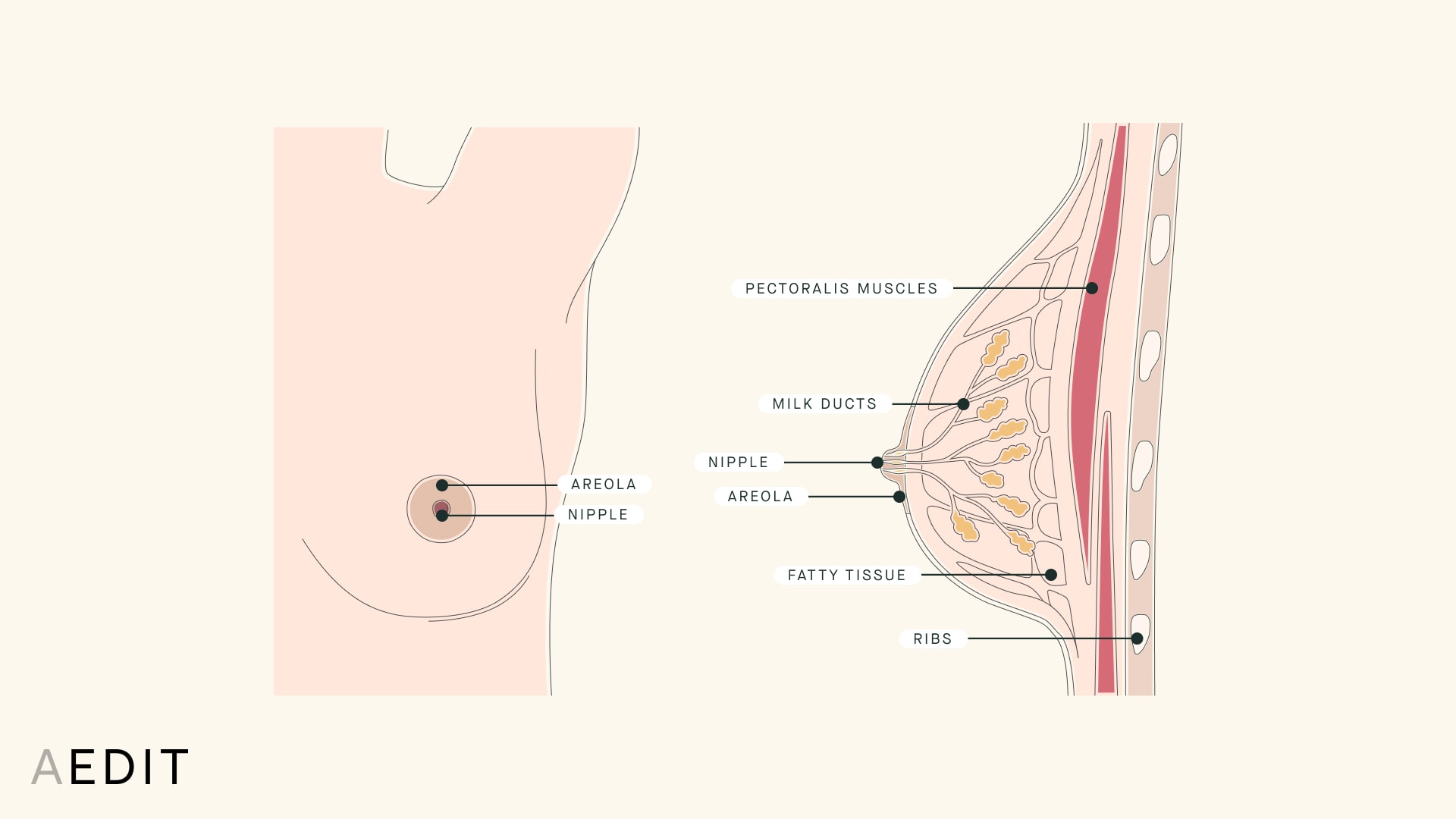Nipple Shape & Size
Nipple size and shape significantly impacts overall breast appearance. Fortunately, a multitude of cosmetic procedures exist to address these concerns.
Content Reviewed by AEDIT Medical Advisory Board
The American Society of Plastic Surgeons reported in 2017 breast augmentation was the most performed procedure. The nipple and areola are major components of breast anatomy and appearance. For this reason, many individuals consider enhancing their nipple shape/size to create their ideal breast appearance. Both breast surgery and nipple surgery have been well practiced secondary to both cosmetic procedures and breast reconstructions (which usually occur due to breast cancer). Large nipples, small nipples, nipple inversion or areola abnormalities can be addressed by a board certified plastic surgeon with well practiced cosmetic procedures. Some patients choose to combine these cosmetic surgical procedures with a breast lift or breast reduction to further enhance the results.
The nipple and areola are a prominent feature of breast anatomy. The areola is the hyperpigmented (darker) area around the nipple. The bumps on the areola can be hair follicles or Montgomery glands which provide lubrication for breastfeeding. The nipple protrudes from the areola and contains mammary ducts (milk ducts) which connect into the mammary glands within the breast. In both men and women, the tissue composing the nipple is highly sensitive.
Female Breast Anatomy
Breast, nipple, and areola size/shape and overall appearance are primarily determined by genetics. A pregnant female will experience natural breast changes like increases in size, tenderness and “lumpiness”. As we age, nipples will begin to point downward and the areola may begin to become more elongated appearing secondary to changes in breast tissue.
Large versus small nipples are typically judged relative to both areola size and breast size. A 2009 study showed the average female nipple was 1.3 centimeters in diameter. There is an extensive variety in nipple size across both the male and female population.
Inverted nipples exist when the nipple does not protrude away from the areola as typically expected. This can not only cause aesthetic concerns. but also affect function.
Areola size is mostly a matter of perception. The relative size of the areola to the breast tissue and it’s position on the breast can cause aesthetic concerns. A study determined the average female areola was 4 centimeters in diameter.
As with most all cosmetic procedures, the decision to pursue alterations to appearance is personal. If nipple/areola appearance is affecting self esteem or causing needless concern, a consultation with a plastic surgeon can be the first step in creating the ideal appearance. Women who plan to breastfeed should discuss this with a plastic surgeon prior to pursuing a nipple surgery to ensure function is preserved.
The majority of corrective nipple surgeries are comparatively less invasive with lower recovery times. A conversation with a plastic surgeon can help to determine which nipple correction or areola correction is most appropriate for a specific concern.
For a deeper dive into the treatment options outlined above, check out our complete guide to Nipple Correction Solutions.

